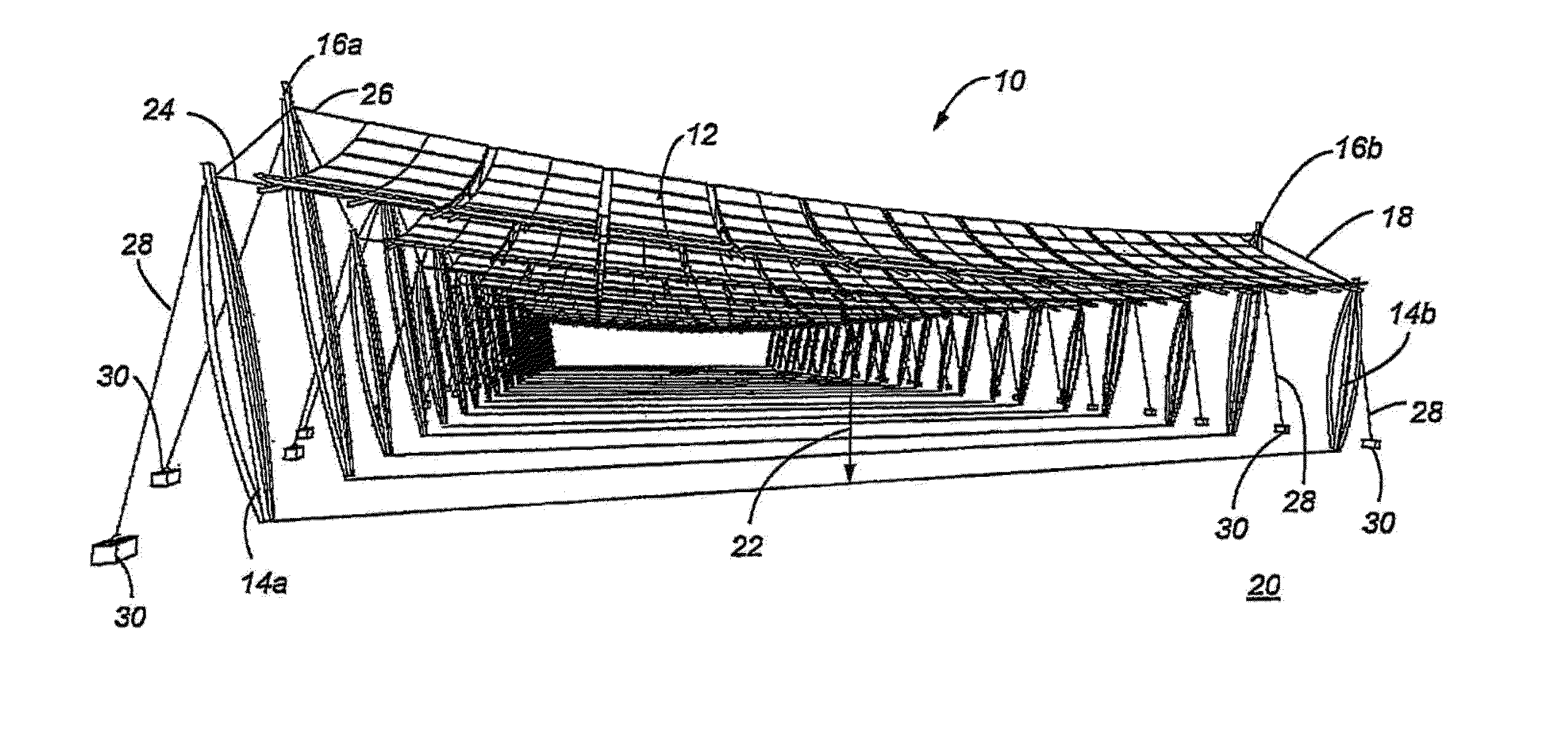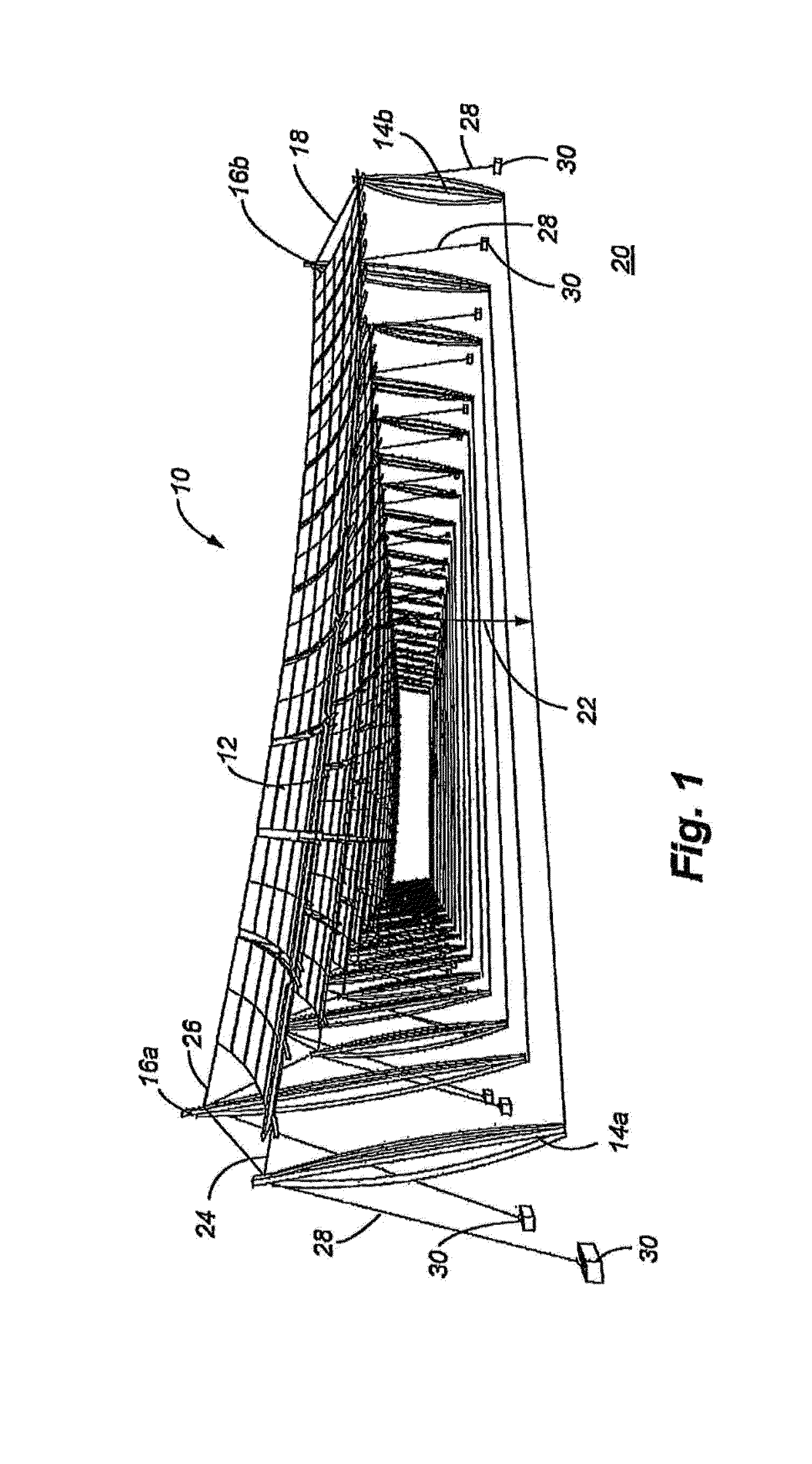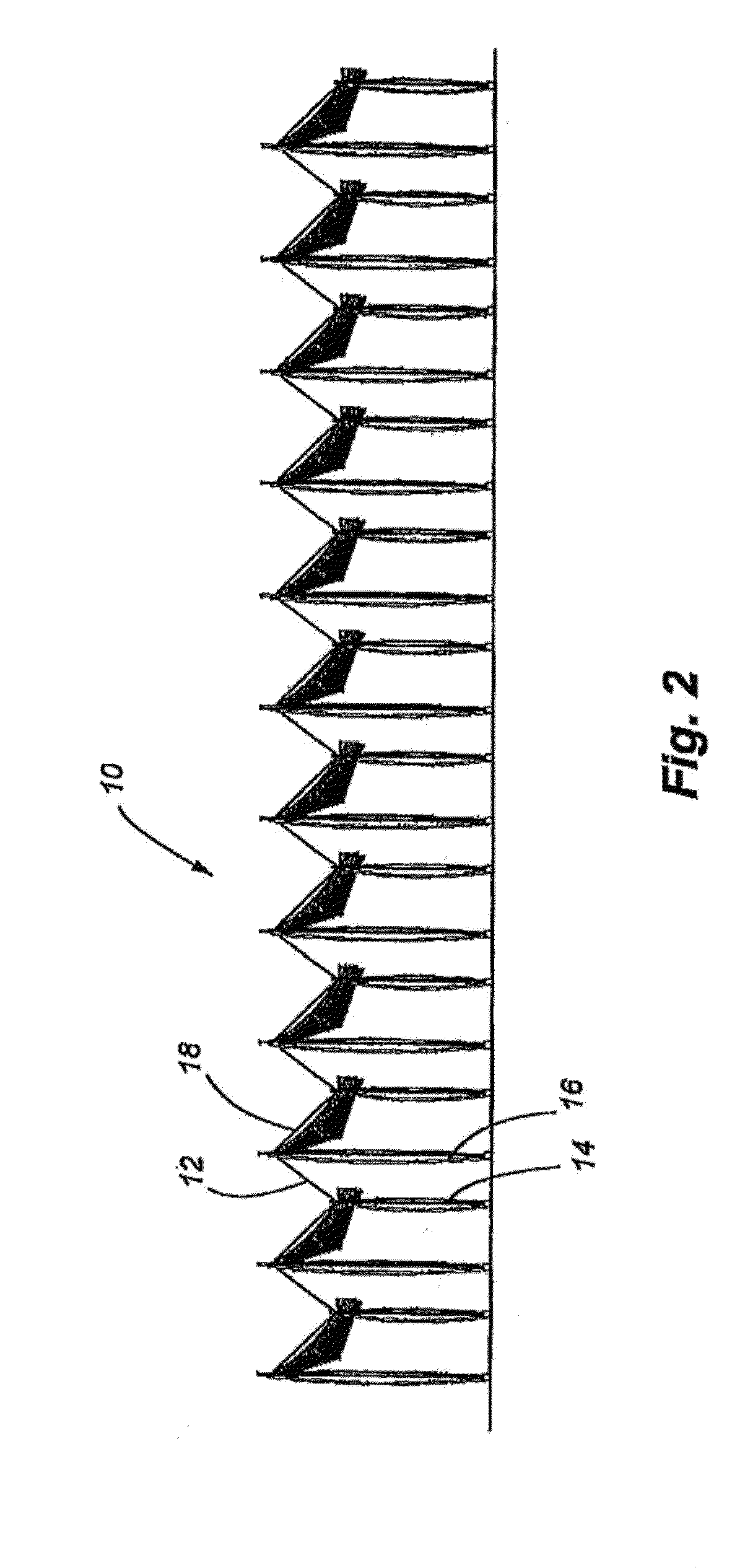Solar array support methods and systems
a solar array and support method technology, applied in the field of solar energy capture, can solve the problems of difficult and expensive implementation of solar panel arrays in remote locations, difficult and expensive solar panel array installation in environmentally sensitive areas without significantly affecting the surrounding habitat, and the number of anchor lines used is reduced, so as to minimize the number of anchor lines used, the effect of reducing construction efforts and maintenance needs of the system
- Summary
- Abstract
- Description
- Claims
- Application Information
AI Technical Summary
Benefits of technology
Problems solved by technology
Method used
Image
Examples
Embodiment Construction
[0197]The following detailed description should be read with reference to the drawings. The drawings, which are not necessarily to scale, depict illustrative embodiments and are not intended to limit the scope of the invention.
[0198]FIG. 1 is a perspective view of a solar panel array supported in accordance with an illustrative embodiment. A solar panel array 10 is illustrated as including a number of solar panel receivers or pods 12. Pairs of short columns 14a, 14b and tall columns 16a, 16b are aligned with one another. The pairs of columns 14a, 16a and 14b, 16b may also be connected by a stability cable 18 that runs along the edges of the array 10. The solar panel receivers 12 are held above a surface 20 at a height 22 defined by the columns 14a, 14b, 16a, 16b. A first main cable 24 is suspended between the short columns 14a, 14b, and a second main cable 26 is suspended between the tall columns 16a, 16b. The solar panel receivers 12 are designed to be supported by the cables 24, 2...
PUM
 Login to View More
Login to View More Abstract
Description
Claims
Application Information
 Login to View More
Login to View More - R&D
- Intellectual Property
- Life Sciences
- Materials
- Tech Scout
- Unparalleled Data Quality
- Higher Quality Content
- 60% Fewer Hallucinations
Browse by: Latest US Patents, China's latest patents, Technical Efficacy Thesaurus, Application Domain, Technology Topic, Popular Technical Reports.
© 2025 PatSnap. All rights reserved.Legal|Privacy policy|Modern Slavery Act Transparency Statement|Sitemap|About US| Contact US: help@patsnap.com



